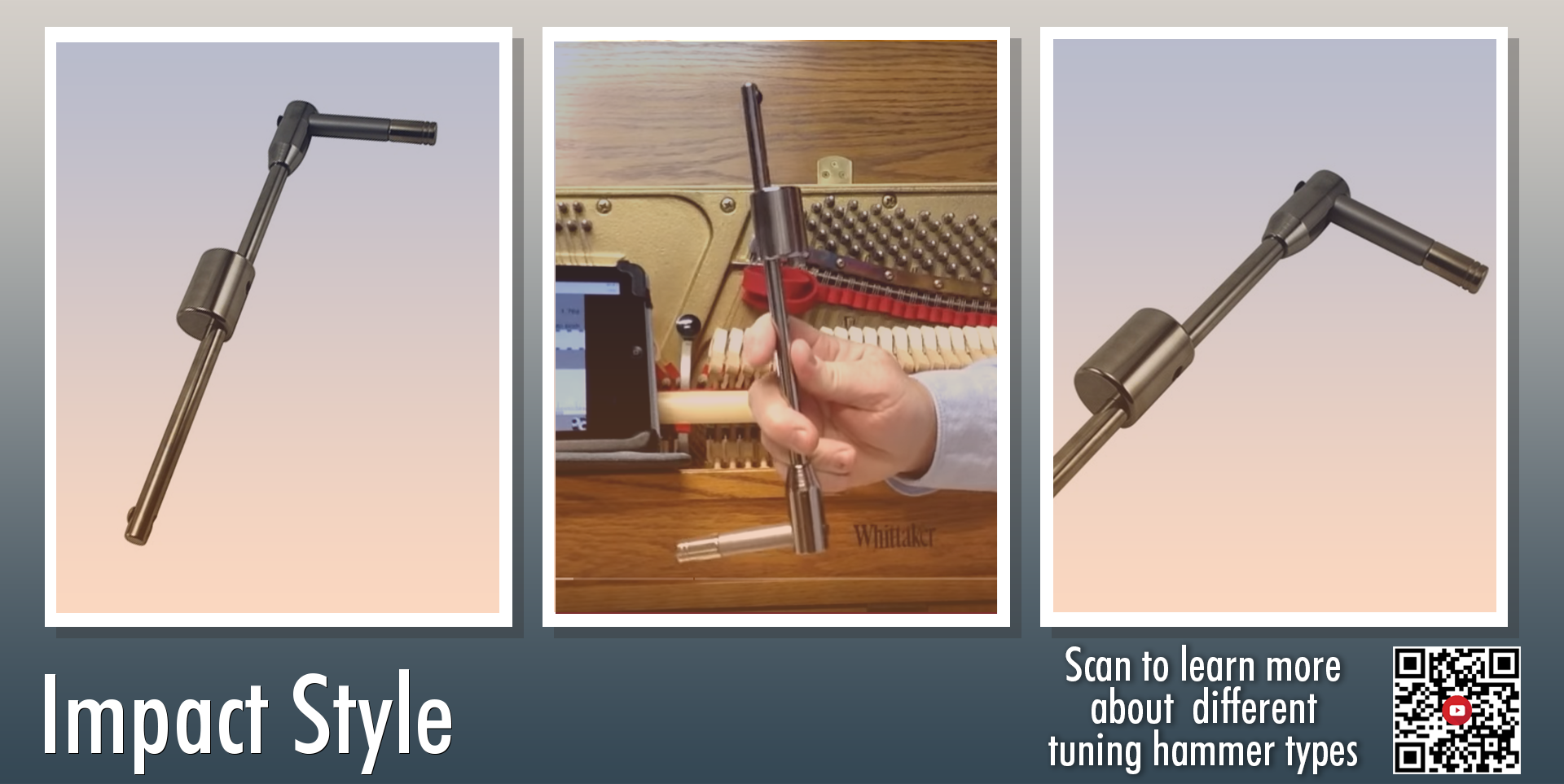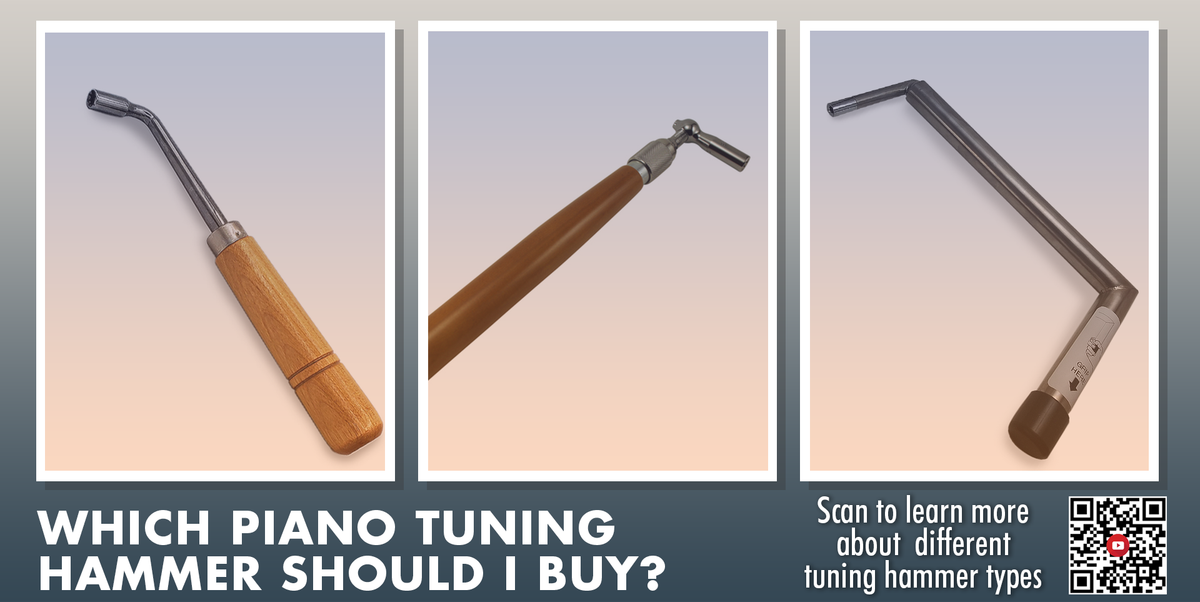Which Piano Tuning Hammer Should I Buy?
Posted by Casey Moore on Oct 09, 2023
If you've just started your piano tuning journey, you're probably in the market for a piano tuning hammer. Which one should you purchase? Here's a helpful guide to the different types of piano tuning hammers and their uses.
Types of Tuning Hammers
Gooseneck Style
Gooseneck style tuning hammers feature a handle that's curved at the end, with the head of the lever turned at an angle. Gooseneck hammers come with several different handle materials, including wood and nylon. Often, these hammers have threaded necks, which allow you to switch to different tuning head angles.

Extension Style
Extension hammers feature an extendable neck, threaded at both ends. These hammers are great because they allow you to access hard-to-reach angles easier. Additionally, many piano technicians like extension hammers because they feel sturdier and more solid.

Impact Style
Impact tuning hammers have a weight on the neck that can be moved up and down, allowing you to change the amount of force you apply. These hammers are mostly useful for upright pianos, and the tuning technique is slightly different than other types of hammers.

Factory Style
Factory style tuning hammers are used, as you might guess, in piano factories. They have an end that's made to be hit with a hammer, for setting tuning pins into the block.

Frequently Asked Questions
Why the star shape?
You may have noticed that these tuning hammers have star shaped bits, but a regular piano tuning pin is square. The star shape of the hammer bit allows the hammer to have more angles on the tuning pins, and therefore more control.

Which handle is best?
Most hammers are made with either a nylon or wood handle. Which is better? This depends on your personal preference. Many technicians prefer the feeling of a nylon handle. Nylon feels smoother than wood, and is much more comfortable to hold for hours while you tune a piano. Additionally, a nylon handle is more durable than a wood handle and will last you much longer.

What else do I need to start tuning?
In addition to a tuning hammer, you'll need to get a mute kit, containing rubber mutes and a temperament strip. These tools allow you to tune individual strings by muting others.

You can purchase tuning hammers, mute kits, and any other piano tools you'll need from our website.

